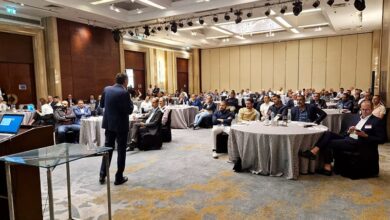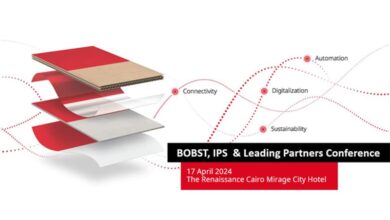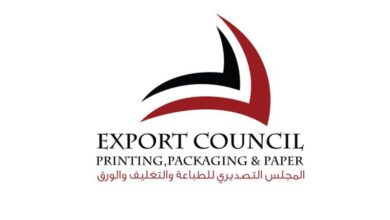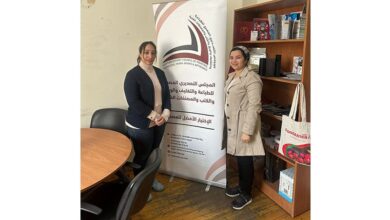Against All Odds
The story of H-Pack in Cairo tells how sound investment and belief in modern technology can bring a business back from the brink
Stepping into a business, without knowing anything about it and then making it a success, is definitely a story to be shared with. In an exclusive conversation with ME Printer Magazine, Sherif Hamed, proprietor of H-Pack packaging and Printing Solutions in Cairo, Egypt shares his successful journey, who despite the odds made his father’s once dwindling business into a rising star.
When Hamed, started his career in the printing business in the 80s, as a partner to a letterpress shop with negligible knowledge of the trade, he had no clue then that it will turn out to be a grand success in times to come. Soon he meandered away to packaging in the 90s. Armed with the belief that packaging is just about ink and paper he bought a Roland 201, GTO Heidelberg, a polar cutting machine and established H-Pack, but having landed up in the venture, he realised it was much more than just ‘ink’ and ‘paper’, and not being unable to understand the technical aspect apart from lack of a business aptitude, he decided to end the business till his son Sherif Hamed, revived it in 2002.
Starting from the Scratch
A qualified mechanical engineer from the USA, Sherif wanted to invest his knowledge in revitalizing his father’s business, thus took up the charge immediately as the Customer Service Manager, especially when he realised that the house produces about 8,000 sheets per hour and about 15 tonnes per month traditionally, he wanted to take it steps further, although it was not his field.
“When I started I had no clue about the trade, but having observed the scenario well, we realised that we needed to improve the machinery, the infrastructure, to sell ourselves in the market,” recalled Sherif.
In 2005, H-Pack invested in 2 Heidelberg 2 Colour Machine with ink zone from Yousef Allam Group and a folder gluer from Packtech and soon they were printing 150,000 boxes per shift, which means 300% increase in production and 25% decrease in the operating cost.
Success; an addiction
The phrase that ‘ Taste of success is addictive,’ holds true for Sherif, after having some tang of it, he wanted to have some more, and in 2008, much against his father’s will, he started a negotiation with Yousef Allam on a Heidelberg 4 Colour Machine. It took him two years to put things in order and have this prized possession. Recalling which Sherif remarks laughingly “It was a deal to be remembered in the history of Heidelberg and Yousef Allam because the amount of discussions and the push to make it happen was such, that it will never happen again. I had to explain my father that packaging business today has undergone a sea change, the producer has to create goods that are demanded by the customers, and then only can any business flourish.”
His tremendous hard work paid off and they grew up to be the first printing press in Egypt, who had invested in a printing press with all the bells and whistles, including pre-setter feeder, automatic plate changing and automatic washing cylinder( dry star 3000), dynamic sheet break and access control.
“It was a big leap, our business doubled and exceeded 100%, the standard rose and so did the range of our production, i.e 70 to 80,000 sheet to four different orders per shift, with a total average of 900,000 impression and the monthly production ranged between 150 to 200 tonnes.” adds Sherif.

Understanding the Market Dynamics
With advanced printing concepts and tools to control Dot Gain and Colour Management, their production unit gave tough competition to others. Sherif adds “The transformation from the traditional method of printing to modern technology is a milestone in H-Pack’s career. It was sort of like ‘Matrix’ (a Hollywood film), where at the end the protagonist sees the world in ‘codes’ and ‘symbols’, while I began to see things in terms of colour management, paper temperature and dryness.”
Sherif and his team believe that printing and packaging are two different genres. Packaging is more about accurate repetitive printing and consistent colours. On the other hand the runs are long and the range of finishing is mind boggling. To make the trade economically feasible Sherif doesn’t want to introduce CtP to H-Pack, explaining himself he said “Most of the products that we produce are very basic based on repeat orders, on a monthly basis in a large quantity. We use about 200 printing plates per month, thus a huge investment in CtP is not worth it. I can get it done outside but I cannot get things printed outside my printing press, the most major task in producing the packaging.”
In the Dark Hours
Talking about the lows in the business Sherif recalls the “Arab Spring” in 2011, which triggered soon after they had installed new machines. The revolution came like a shock to him as an investor, much like others in the industry.
He lost about 300,000 Egyptian pounds. One of his customers couldn’t pay him since exports came to a halt in Libya, Yemen and Syria. However, packaging industry is somewhat an immune one but it did get a jolt from the revolution in Egypt.
Sherif also found it very difficult to continue with its expansion plan. The investment in essential equipment such as hot stamping, folder gluer and spare parts had to be put on hold. Luckily, it is now a thing of the past, thanks to the stable political conditions, which have permitted economic stability, and today the industry promises great opportunities.
The Egyptian Market
Speaking of the nature of the Egyptian market Sherif adds, it is a complex one, although filled with untapped opportunities, it suffers from the lack of PERSPECTIVE, proper knowledge of the concepts and terminologies.
Citing an example he explains “For instance you install a basic printing machine worth 800,000 Euros, after which logically you should also install a semi automatic plate system worth around 60,000 Euros, which will load the plates automatically in a matter of minutes, saving both time and energy, thereby saving one and a half months per year. Whereas, without the latter, you would waste around half an hour each day apart from energy and power, when you do the job manually. This is the logical reasoning behind an efficient business, which printing presses in Egypt need to understand. We have a huge market of about 85 million Egyptians with a high volume of consumption. Did you know that the market here consumes about 80 to 100 million tea boxes (sized for 40g) per month?”
Plans for the future
Plans for the future looks really ambitious for H-Pack. Sherif planes to invest next in an 8 colour machine, as he believes that soon the market will focus more on highlighting the beauty of the product instead of increasing the production, to attract customers.
“Personally I am studying the possibility of investing in Gallus ICS 670 to cater the lucrative label market. I also see that in the near future, size B1 will be replaced by size VLF (very large format). Smaller sizes will be done mainly by digital printing machines. The next big thing in my opinion is a flexo and rotogravure hybrid printing machine, which I consider to be a crazy mix which opens infinite possibilities,” concludes Sherif Hamed.




